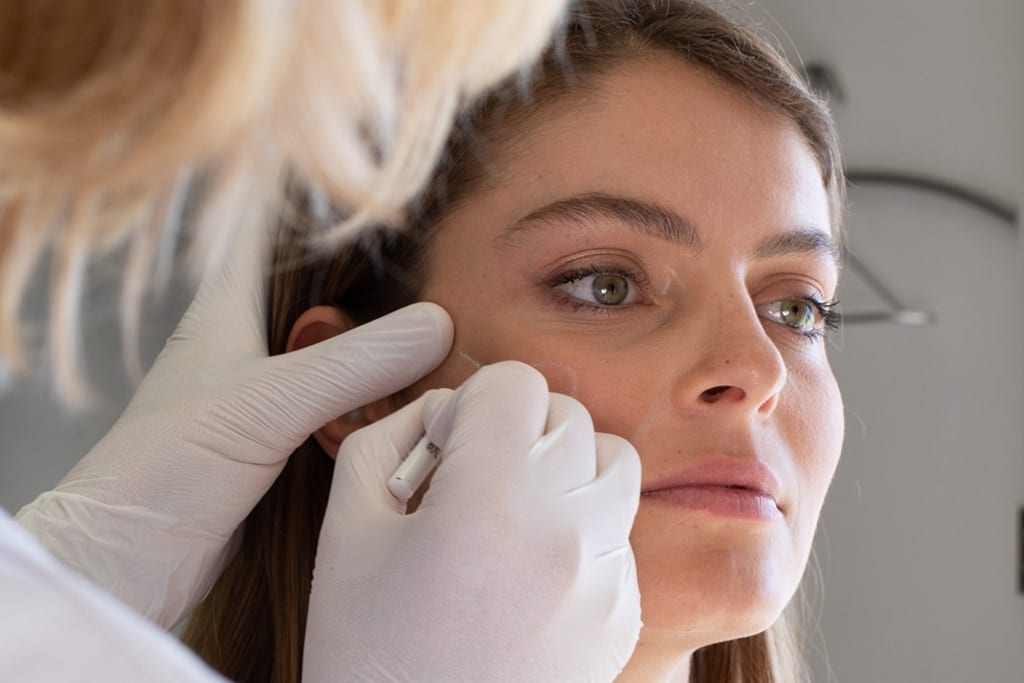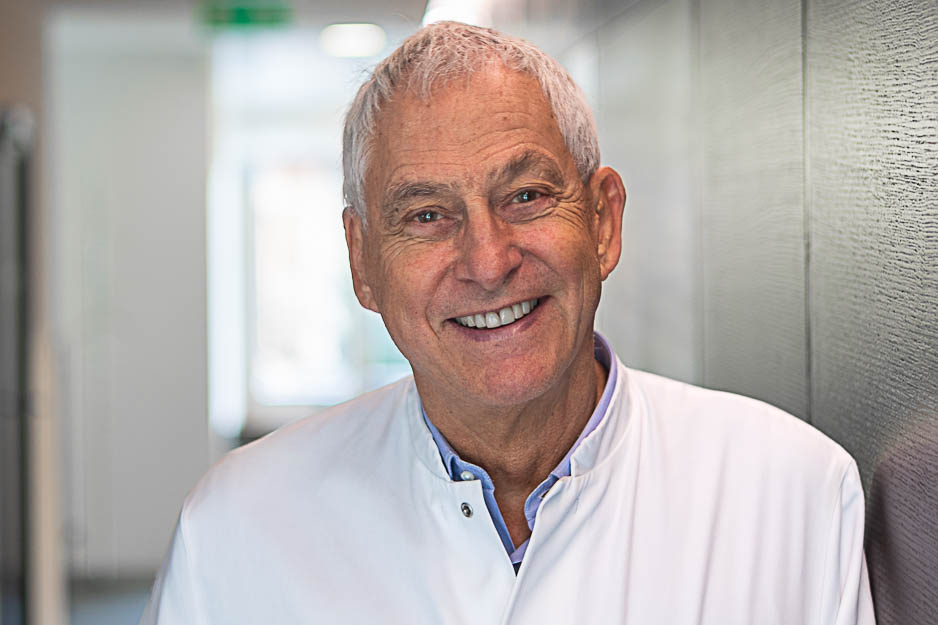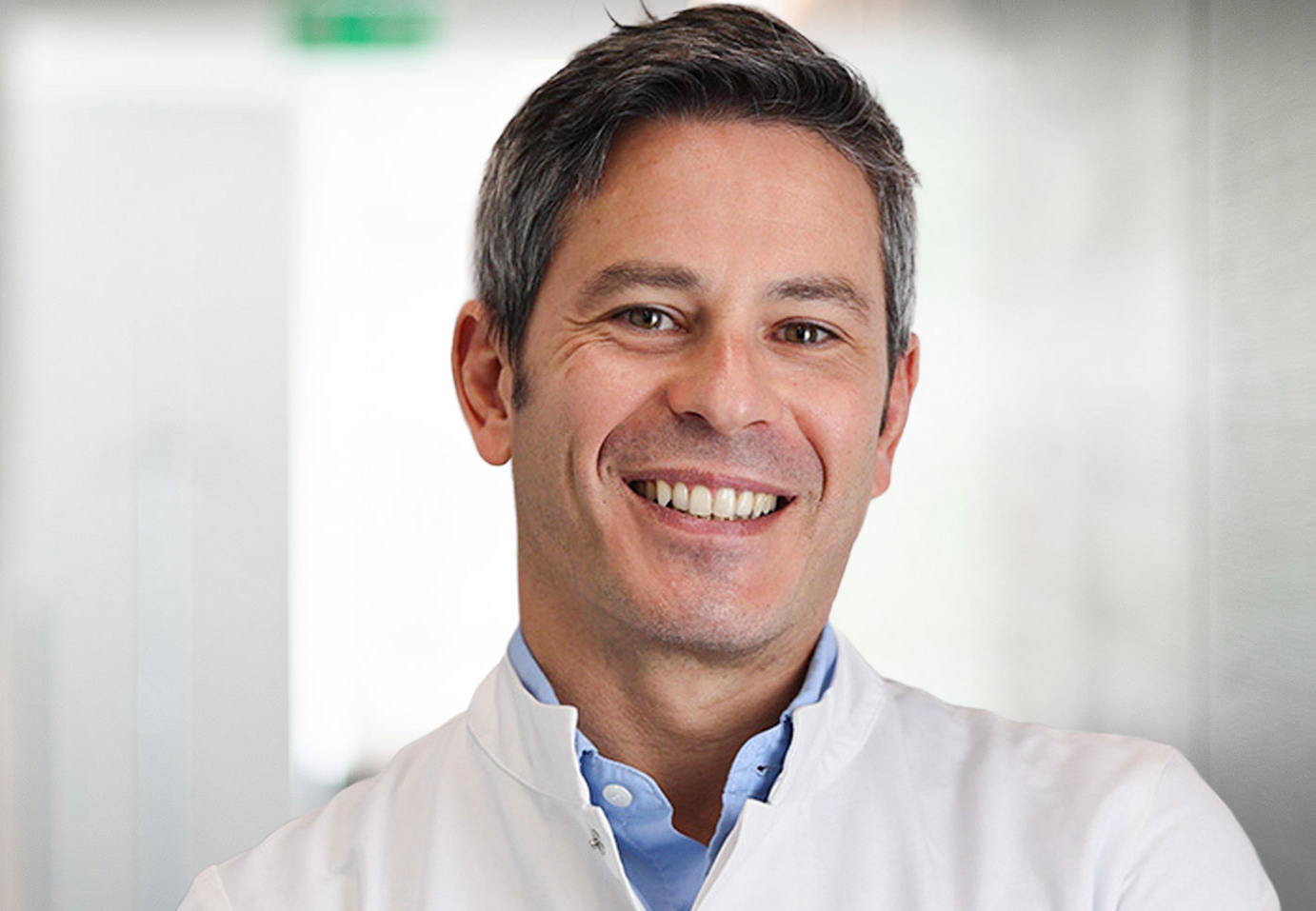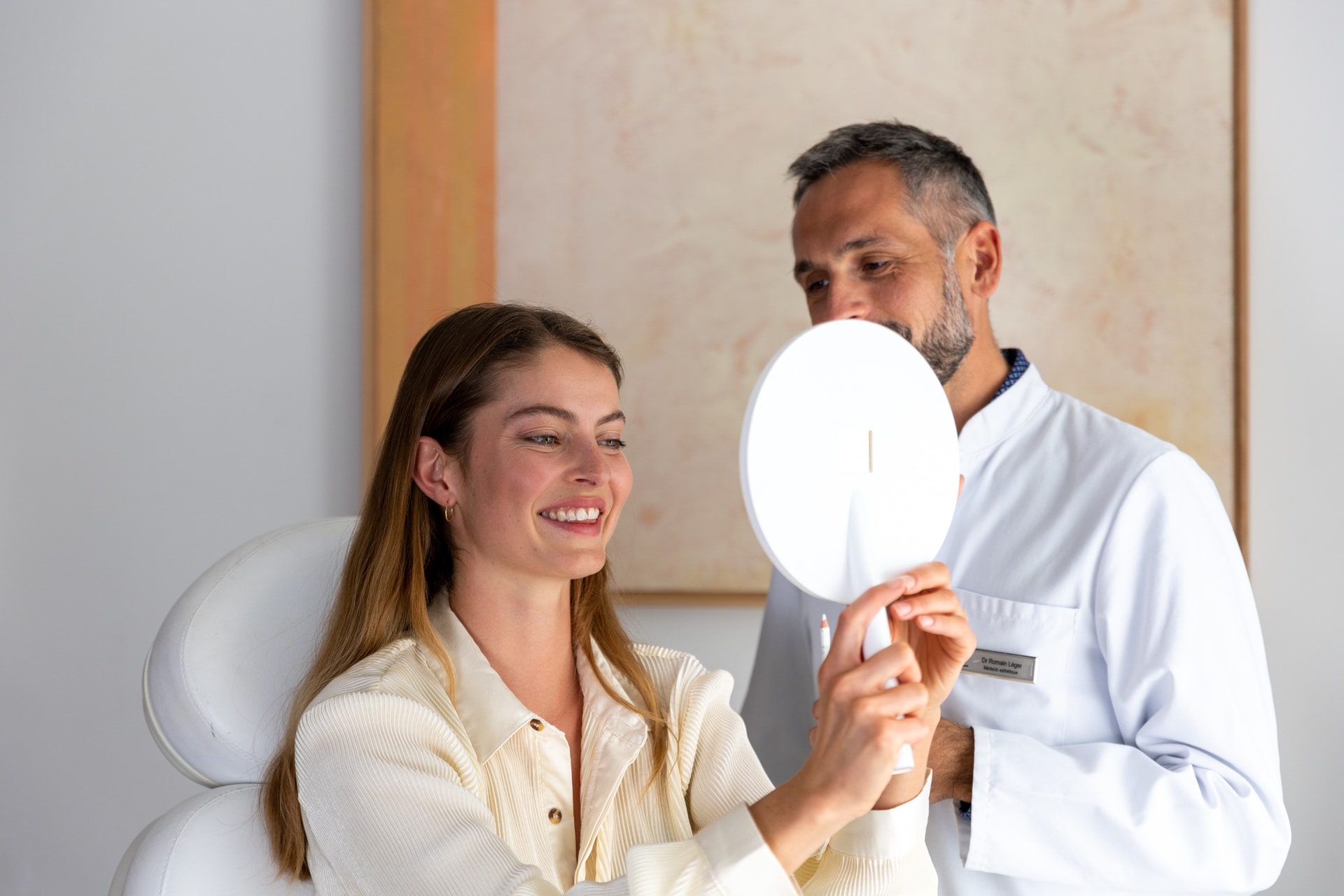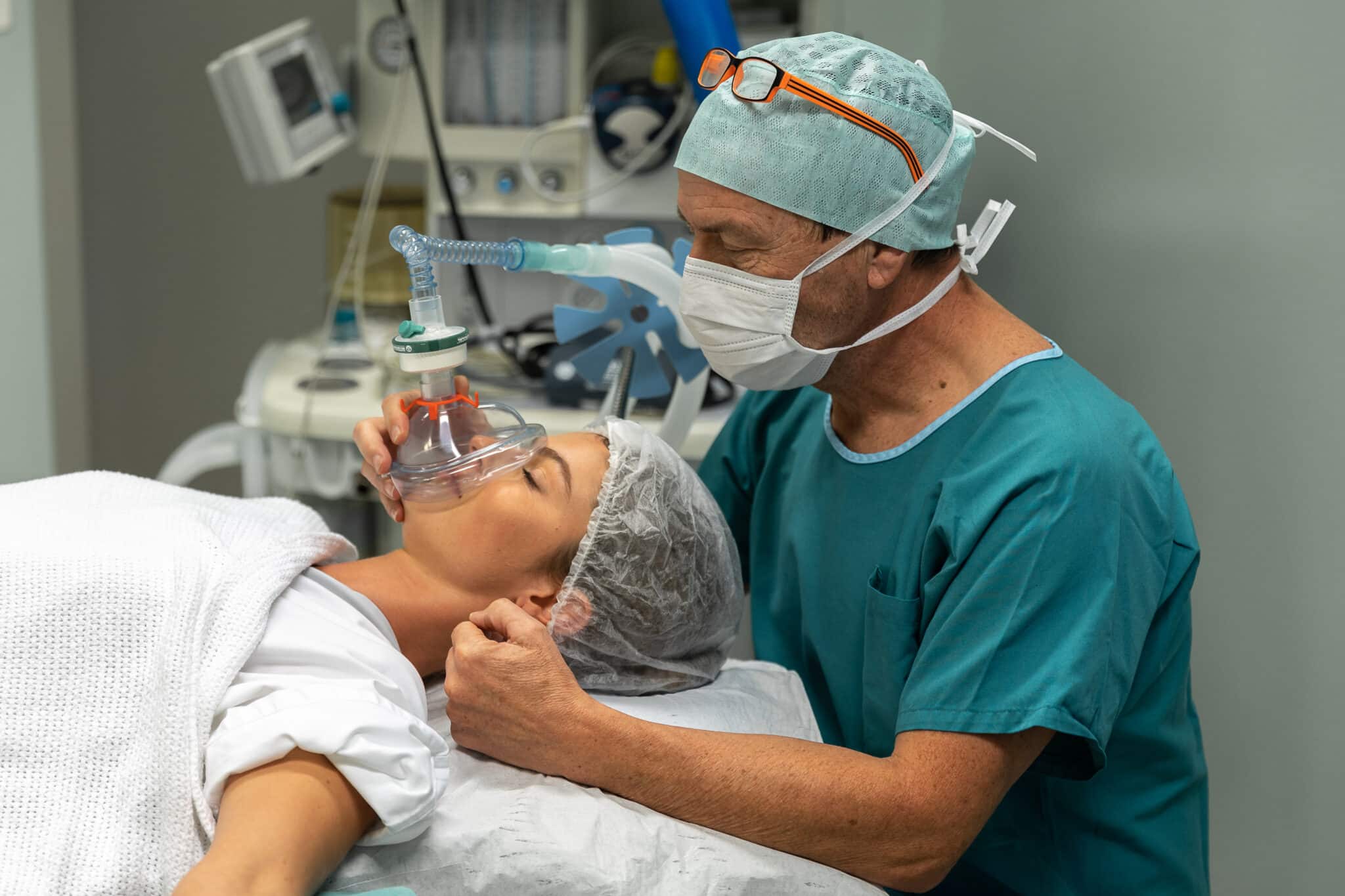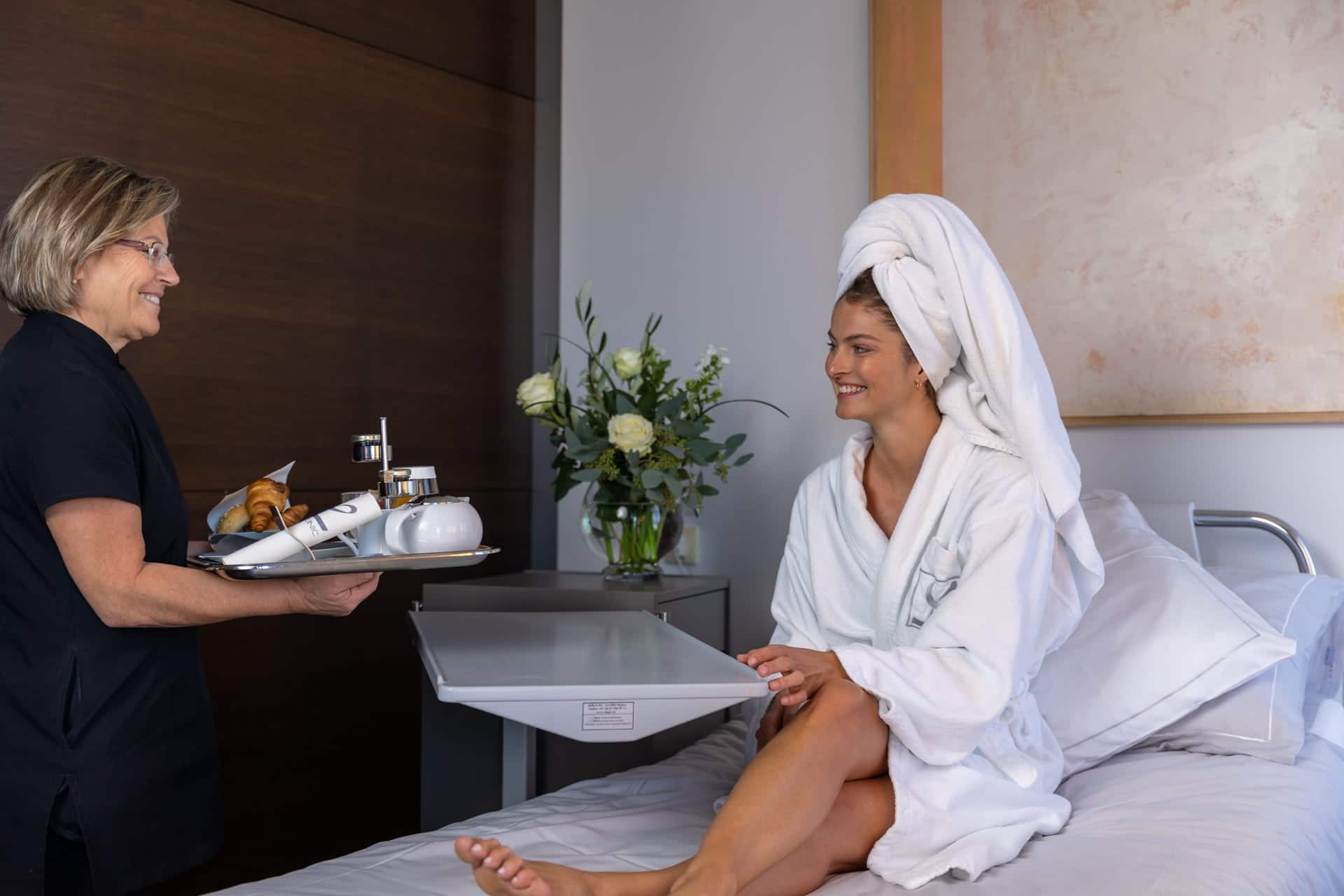Duration
1 – 3 h
Type of anesthesia
General or sedation
Clinic stay
Outpatient up to 2 days
Social downtime
5 – 7 days
Price
from CHF 9’500
Objectives of rhinoplasty
Cosmetic nose surgery or rhinoplasty seeks tobeautify the nose by changing its shape. Le chirurgien va remodeler l’os et le cartilage au travers d’incisions dissimulées à l’intérieur du nez ou au niveau de la columelle.
A rhinoplasty allows to remove or reduce a bump on the the nose , correct a deviated nose (septoplasty), straighten the tip of the nose , reduce the width of the wings of the nose and change the shape of the nostrils.
See more
It also makes it possible to remedy functional problems when they are present.
Each rhinoplasty is unique and the aesthetic goal will be to achieve a natural-looking nose that will remain in harmony with your overall facial shape and personality.
Who is rhinoplasty for?
A rhinoplasty will positively transform the harmony of your face. The results are definitive.
It is one of the most common procedures in cosmetic surgery, and which can benefit anyone from the age of 16, when bones have achieved their growth. However, we generally prefer to wait until the patient reaches majority, ie the age of 18.
See more
Rhinoplasty is a surgical procedure that can lead to risks and complications. In any case, a first consultation with your surgeon is essential to know if this intervention is adapted to your particular situation.
Before and after pictures
The rhinoplasty procedure
A rhinoplasty will positively transform the harmony of your face. The results are definitive. Follow your surgeon’s recommendations to optimize the healing process and the quality of the result.
Before the intervention
The first consultation is essential to understand your request and your motivations. This is also an opportunity for your surgeon to carefully analyze the shape of your nose to identify any functional or structural problems.
The expected result can be simulated and discussed using virtual imaging software. A pre-operative health check will be carried out to verify the absence of contraindications.
Anesthesia
In principle, rhinoplasty takes place under general anesthesia. However, in some cases, local anesthesia under sedation may be sufficient. The choice of the technique will be made between you, your anesthesiologist and your surgeon.
A consultation with your anesthesiologist will take place a few days before your procedure.
The day of the procedure
Your surgeon will adapt his technique accordingly to the needed corrections.
The incisions are most often made inside the nostrils or under the upper lip to keep the scars invisible. When an external incision is required, for example if one needs to reduce the size of the nostrils, it can be made through the columella (pillar separating the two nostrils) or at the base of the nose.
The osteo-cartilaginous infrastructure can be shaped according to the desired goal: narrow a too wide nose, remove a bump or a deviation, refine the tip of the nose or shorten it if it is too long. Sometimes cartilage or bone grafts will be used to fill a depression, support a portion of the nose or improve the shape of the tip.
The incisions are then closed with small absorbable sutures. The nasal cavities are filled with different absorbent materials. A shaping bandage is attached to the surface of the nose and reinforced with a molded splint for support and protection.
Depending on the surgeon and the extent of the improvements to be made, the operation can last from 45 minutes to two hours, or even more exceptionally.
After the procedure
The aftermath of rhinoplasty is generally painless. The inability to breathe because of the dressings is the main discomfort during the first postoperative days.
An edema (swelling) , sometimes accompanied by ecchymoses (bruises) will appear. Its importance and duration vary from one individual to another. It is recommended to rest and avoid any physical effort the days following the procedure.
Nasal obstructions are removed between the 1st and 5th postoperative day. The splint is removed between the 5th and 8th day, replaced by smaller and more comfortable one for a few more days.
The nose will still be swollen due to the edema and respiratory discomfort will remain. The situation will gradually improve, allowing the return to a normal socio-professional life after about 10 to 20 days. Sports and intense physical activities should be avoided during the first 3 months.
Results
The result is appreciable after a period of two to three months. However, the final state will only be achieved after six months to a year of a slow and subtle evolution.
The intervention generally brings a significant morphological and aesthetic improvement as well as a significant psychological benefit.
The goal of this surgery is to bring an improvement and not to achieve perfection. If your wishes are realistic, the result should give you great satisfaction.
Rhinoplasty on video
Explanations
The art of rhinoplasty at Laclinic
At Laclinic, the artistic skills of the surgeons are essential for each intervention. For rhinoplasty, the challenge consists in preserving a natural aspect to the nose while restoring the harmony of your face .
Would you like more information or the opinion of a professional?
We look forward to hearing from you. We'll be happy to answer any questions you may have.
Around the surgery
The first consultation
The first appointment is essential to identify your needs and expectations. Our specialists will take all the necessary time to understand your demand and offer you the best advice.
Anesthesia
Sensitive to the potentially traumatic dimension of any operation, Laclinic's doctors pay close attention to pain management to make the operation as comfortable and safe as possible.
Associated treatments
Rhinoplasty is often associated with a genioplasty. This is known as a profiloplasty – a surgery that improves the overall harmony of the face between the forehead, the nose and the chin.
On other occasions, rhinoplasty can be combined with a cervico-facial lift or another intervention on the body.
medical rhinoplasty
Medical rhinoplasty represents an interesting and non-invasive alternative to a surgical nose correction, when imperfections remain minor.
- small bump
- slight asymmetry
- slightly drooping tip
The aesthetic doctor performs the corrections with injections of fillers (hyaluronic acid, Radiesse) and/or botulinum toxin (Botox).
